Each year, experts research the most up-to-date information on mental health disorders in the United States. Most recently, the mental health statistics from 2019 show that mental health disorders, substance use disorders, and behavioral health concerns are still a concern for over forty million people.
So, what exactly do you need to know about the mental health statistics of 2019 and where can you receive treatment for a mental health issue today? Let’s break it down below.
Contents
Mental Health Disorders in the United States

According to the Centers for Disease Control and Prevention (CDC), approximately half of all people in the United States experience depression, anxiety, and other mental health disorders at some point in their lives. Common mental health disorders that require treatment in the United States include:
- Major depression disorder
- Anxiety
- Substance use disorders
- Bipolar disorder
- Obsessive-compulsive disorder
- Schizophrenia
- Phobias
The Department of Health and Human Services reports that young adults consistently experience symptoms of anxiety and depression as well as other mental health disorders. In fact, Health and Human Services encourages talking about the mental health statistics of 2019 in order to prevent future risk of developing substance use disorders.
But it’s not just young adults who experience symptoms of mental health struggles. In fact, the most recent mental health statistics (2019) from the CDC show that nearly 30% of all adults aged 18 and older had symptoms of anxiety. Additionally, about 25% of American adults reported symptoms of depression in 2019.
Mental Health Statistics 2019 vs. 2018
The Substance Abuse and Mental Health Services Administration (SAMHSA) keeps track of the mental health statistics each year and notices when there are increases in substance use disorders and/or mental illnesses. In 2018, the SAMHSA reported an increase in the following categories:
- Drug abuse
- Major depressive disorder
- Risk of substance abuse in teenagers and adults
- Co-occurring disorders.
The mental health statistics released in 2019 confirm that the number of Americans who struggle with these issues continues to rise.
There are a few different reasons why the mental health statistics of 2019 show that there is an increase in depression, anxiety, and other mental health disorders. For starters, the outbreak of the coronavirus pandemic toward the end of 2019 truly set off a lot of mental health concerns for people around the world.
On top of this, mental health disorders like anxiety and addiction go hand-in-hand, which are known as co-occurring disorders. The National Institute of Mental Health states that nearly 8 million adults have these co-occurring disorders and often need dual diagnosis treatment to achieve a full recovery.
Furthermore, part of the reason why the mental health statistics of 2019 show such high numbers of Americans with mental health disorders is because, even though millions of people have diagnosed mental illnesses, an alarmingly small number of these people actually receive treatment.
These mental health statistics from 2019 prove that mental health disorders were a pressing issue in this past year and continue to require Americans to seek mental health treatment. But how do you know what mental health care will be best for you?
What Do These Statistics Mean For You?

If you are one of the millions of people who struggle with mental health disorders and/or substance use disorder, these mental health statistics of 2019 show that you are not alone in your fight.
The symptoms of mental health disorders vary depend on each individual’s experience, but all of these symptoms can significantly affect your physical, mental, and behavioral health. Common symptoms you might be familiar with include:
- Anxiety attacks
- Changes in sleep patterns
- Loss of appetite
- Increased use of alcohol and/or drugs
- Behavioral and mood shifts
- Persistent worries
- Thoughts of suicide
After reading this list, you might come to realize that you are one of the millions of people who needs treatment for these challenging symptoms. Remember, all of these mental health statistics of 2019 show that too many people don’t receive treatment for these issues—the only way to reduce these numbers and find health and happiness is to seek mental health care.
Together, We Can Improve 2020’s Mental Health Statistics
At Port St. Lucie Hospital, we are dedicated to helping every single person with mental health disorders, regardless of age, life circumstances, and current struggles. We believe that we can improve and reduce the frequency of mental health issues one patient at a time.
Get the answers to all of your mental health questions by calling (772) 335-0400 or take the first step toward recovery by completing our confidential contact form today.


























